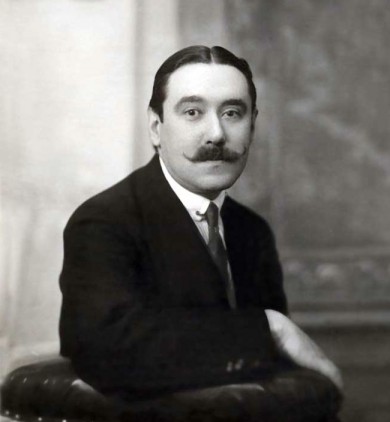South Beach Chamber Ensemble offers a mixed bag of Dvořák and Turina

Joaquín Turina’s Piano Trio in B minor was performed by the South Beach Chamber Ensemble Friday night at Coral Gables Museum.
Chamber music performance can be an inspirational experience. When an ensemble speaks the same language, we are drawn in to the beautiful world of intimate musical conversation.
The South Beach Chamber Ensemble’s initiative to present new and canonic chamber music in all its forms is admirable and valuable for the South Florida community. Unfortunately, Friday evening’s concert with works of Turina, Dvořák, and Carlson was underwhelming, lacking ensemble cohesiveness, pitch precision and a clear musical interpretation.
The venue at Coral Gables Museum is an intimate setting with evocative contemporary artworks gracing its walls. However, while the reverberant acoustic provided a flamboyant fabric of sound, it did not aid the performers’ communication.
Written in 1883 after a period of study with Brahms, Dvořák’s Piano Trio in F minor is among the composer’s more stormy and serious works, far removed from his light-hearted, folk-inspired style. The Brahmsian hemiolas and thick-layered textures appear as a strong and lively influence on the mature Dvořák.
In the reading of violinist Sheena Gutierrez, cellist Michael Andrews, and pianist Michael Linville the elegiac and heroic character of the Allegro ma non troppo was weakly projected, lacking in broad gestures and overall ensemble blend. The grazioso scherzo was inconsistent, as the spiccato bow strokes were not well matched and the cross-rhythms between strings and piano were uncertain.
In the Poco adagio, the declarative melody between cello and violin delves further into concurrent sorrow, nostalgia, and grandeur. The soaring high register of the violin soon blossoms into an ardent “love-song,” which provided Gutierrez’s most vulnerable and convincing playing in the Dvořák. Her heartfelt inflections seemed to inspire the pianist as he achieved warmth in his tone and explored more eloquent phrasing.In the finale the ensemble appeared more confident as they attempted to recreate the score’s rhythmically ferocious, yet introspective and cathartic energy.
Joined by pianist Ciro Foderé, the group returned with refreshed spirits to play the Piano Trio by Mark Carlson. This two-movement work, written in 2008, was in part conceived on an airplane. Hence the opening section, “Frenzy, with Sarabande,” in which the motoric energy of ostinato patterns is combined with a subdued lyrical section.
The second movement, “Illumination,” started off successfully for cellist Andrews who broght out the emotion of Carlson’s engaging melody. Yet more pitchy moments and uneven vibrato, in the strings and unassertive keyboard playing failed to bring the quick mood shifts and textural build-ups a la Faure.
Turina’s Piano Trio in B minor, written in 1933, reflects his classical style infused with Spanish and French harmonic undertones. Foderé was a driving force in this work, as he emphatically phrased the sweeping passages, displayed greater clarity of voicing, and structural understanding. Gutierrez and Andrews responded more actively to this music exhibiting the strongest chamber partnership of the evening. Still, the Scherzo’s brisk, quintuple-meter string passages of the scherzo lacked momentum, and the middle section could have used more sensuousness in the dotted rhythms of the piano. Andalusian-scented harmonies and melodies close out the trio by creating tides of sound that resounded in the lively acoustic of the hall.
The program will be repeated 6 p.m. Sunday at the Miami Beach Botanical Garden. sobechamberensemble.org
Posted in Performances
Leave a Comment
Sat Feb 11, 2017
at 12:57 pm
No Comments






